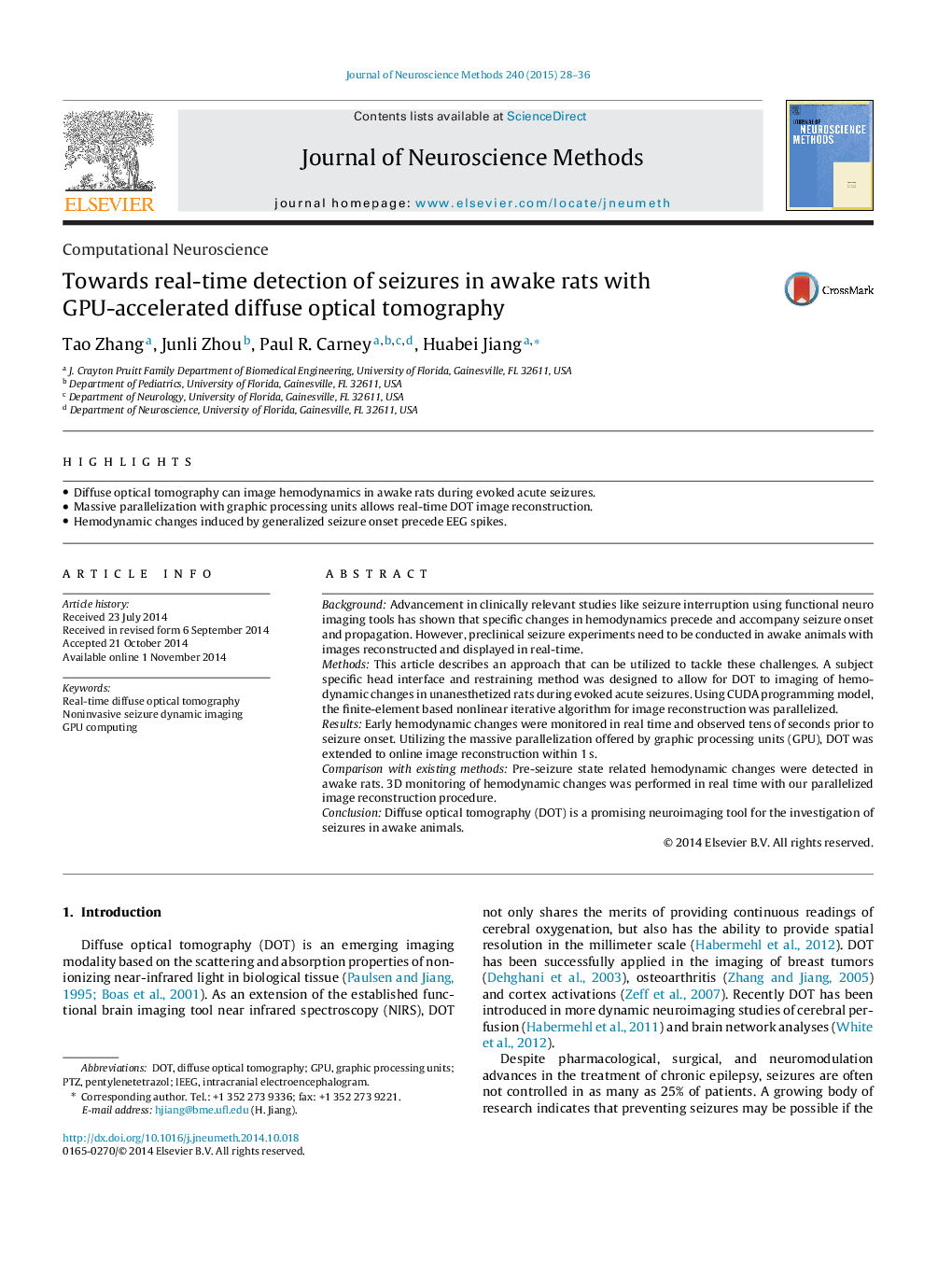| Article ID | Journal | Published Year | Pages | File Type |
|---|---|---|---|---|
| 6268410 | Journal of Neuroscience Methods | 2015 | 9 Pages |
â¢Diffuse optical tomography can image hemodynamics in awake rats during evoked acute seizures.â¢Massive parallelization with graphic processing units allows real-time DOT image reconstruction.â¢Hemodynamic changes induced by generalized seizure onset precede EEG spikes.
BackgroundAdvancement in clinically relevant studies like seizure interruption using functional neuro imaging tools has shown that specific changes in hemodynamics precede and accompany seizure onset and propagation. However, preclinical seizure experiments need to be conducted in awake animals with images reconstructed and displayed in real-time.MethodsThis article describes an approach that can be utilized to tackle these challenges. A subject specific head interface and restraining method was designed to allow for DOT to imaging of hemodynamic changes in unanesthetized rats during evoked acute seizures. Using CUDA programming model, the finite-element based nonlinear iterative algorithm for image reconstruction was parallelized.ResultsEarly hemodynamic changes were monitored in real time and observed tens of seconds prior to seizure onset. Utilizing the massive parallelization offered by graphic processing units (GPU), DOT was extended to online image reconstruction within 1Â s.Comparison with existing methodsPre-seizure state related hemodynamic changes were detected in awake rats. 3D monitoring of hemodynamic changes was performed in real time with our parallelized image reconstruction procedure.ConclusionDiffuse optical tomography (DOT) is a promising neuroimaging tool for the investigation of seizures in awake animals.
